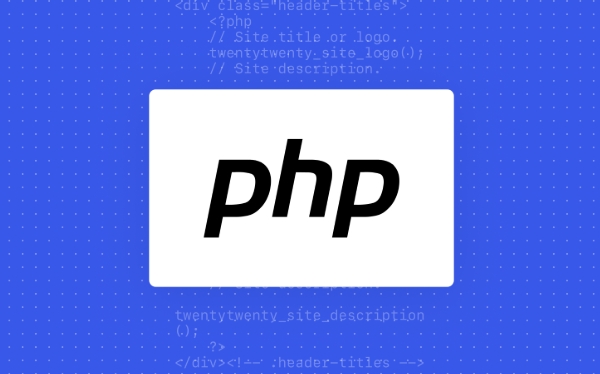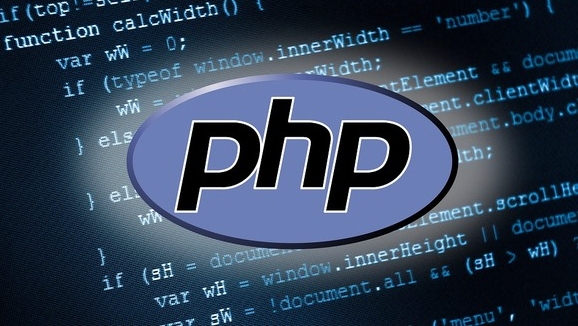Negative first is used in PHP regulars to match positions that do not follow specific content. ^(?!.\.jpg$).*$/ can filter non-.jpg-end file names, such as photo.png?; ^(?!.error). $/m can exclude log lines containing "error"; combined use such as ^a(?!.*b).*$/ can match strings starting with a and not containing b; common misunderstandings include missing writes.*, missing anchor points, and wrong order of multi-condition overlay. Correct combination of position anchor points and wildcard characters is the key.

Negative lookahead in regular expressions is a useful but confusing feature in PHP. Simply put, it is used to match positions that are not followed by something . This article uses several practical examples to help you understand how to use this structure in PHP ?!

Match strings that do not end with a specific word
Suppose you want to find out all file names that do not end in .jpg . At this time, you can use negative direction to eliminate it first:

$pattern = '/^(?!.*\.jpg$).*$/';
The meaning of this writing is: start from the beginning and make sure that there is no .jpg in the end in the entire string. Suitable for filtering picture file lists, log content and other scenarios.
For example:

-
photo.png? Match successfully -
image.jpg? will not be matched
Note: ^ and $ here are required, otherwise it may mismatch strings containing .jpg in the middle.
Exclude sentences with certain keywords
Sometimes you just want to extract text that does not contain certain words. For example, want to find all log lines that do not contain the word "error":
$pattern = '/^(?!.*error). $/m';
After adding the m modifier, ^ and $ will work on each line, not the entire string.
Use scenarios include log analysis, filtering clean data, etc. This writing method can avoid reading all first and then filtering manually, which is more efficient.
Combination of complex conditions
If you want to match something more complicated, such as "match a string that starts with a but does not contain b", you can write it like this:
$pattern = '/^a(?!.*b).*$/';
It means: first confirm that it starts with a , and then check whether b does not appear in the entire string. This logic is a bit confusing, but it will be clear just by disassembling it:
-
^a: The beginning must be a -
(?!.*b): There cannot be b afterwards -
.*$: The remaining characters are fine
This writing method is suitable for some scenarios of form verification or rule judgment.
Common misunderstandings and precautions
There are several places where negative directions are particularly prone to errors:
- Forgot to add
.*, resulting in only checking if there are target characters after the current position - No anchors
^and$, resulting in partial matches rather than overall matches - The order and nesting relationship are not handled properly when multiple negative conditions are superimposed
For example:
Wrong writing method:
/(?!jpg)/
This will only check whether the current position is followed by jpg, and will not limit the entire string.
The correct way to write it should be used together with position anchor points as mentioned earlier.
Basically that's it. Although the negative direction in PHP seems a bit tangled, just remember its core logic: "What can't appear after here", and then combine it with anchor points and wildcards to write clear and practical rules.
The above is the detailed content of php regex negative lookahead example. For more information, please follow other related articles on the PHP Chinese website!

Hot AI Tools

Undress AI Tool
Undress images for free

Undresser.AI Undress
AI-powered app for creating realistic nude photos

AI Clothes Remover
Online AI tool for removing clothes from photos.

Clothoff.io
AI clothes remover

Video Face Swap
Swap faces in any video effortlessly with our completely free AI face swap tool!

Hot Article

Hot Tools

Notepad++7.3.1
Easy-to-use and free code editor

SublimeText3 Chinese version
Chinese version, very easy to use

Zend Studio 13.0.1
Powerful PHP integrated development environment

Dreamweaver CS6
Visual web development tools

SublimeText3 Mac version
God-level code editing software (SublimeText3)
 PHP Variable Scope Explained
Jul 17, 2025 am 04:16 AM
PHP Variable Scope Explained
Jul 17, 2025 am 04:16 AM
Common problems and solutions for PHP variable scope include: 1. The global variable cannot be accessed within the function, and it needs to be passed in using the global keyword or parameter; 2. The static variable is declared with static, and it is only initialized once and the value is maintained between multiple calls; 3. Hyperglobal variables such as $_GET and $_POST can be used directly in any scope, but you need to pay attention to safe filtering; 4. Anonymous functions need to introduce parent scope variables through the use keyword, and when modifying external variables, you need to pass a reference. Mastering these rules can help avoid errors and improve code stability.
 How to handle File Uploads securely in PHP?
Jul 08, 2025 am 02:37 AM
How to handle File Uploads securely in PHP?
Jul 08, 2025 am 02:37 AM
To safely handle PHP file uploads, you need to verify the source and type, control the file name and path, set server restrictions, and process media files twice. 1. Verify the upload source to prevent CSRF through token and detect the real MIME type through finfo_file using whitelist control; 2. Rename the file to a random string and determine the extension to store it in a non-Web directory according to the detection type; 3. PHP configuration limits the upload size and temporary directory Nginx/Apache prohibits access to the upload directory; 4. The GD library resaves the pictures to clear potential malicious data.
 Commenting Out Code in PHP
Jul 18, 2025 am 04:57 AM
Commenting Out Code in PHP
Jul 18, 2025 am 04:57 AM
There are three common methods for PHP comment code: 1. Use // or # to block one line of code, and it is recommended to use //; 2. Use /.../ to wrap code blocks with multiple lines, which cannot be nested but can be crossed; 3. Combination skills comments such as using /if(){}/ to control logic blocks, or to improve efficiency with editor shortcut keys, you should pay attention to closing symbols and avoid nesting when using them.
 How Do Generators Work in PHP?
Jul 11, 2025 am 03:12 AM
How Do Generators Work in PHP?
Jul 11, 2025 am 03:12 AM
AgeneratorinPHPisamemory-efficientwaytoiterateoverlargedatasetsbyyieldingvaluesoneatatimeinsteadofreturningthemallatonce.1.Generatorsusetheyieldkeywordtoproducevaluesondemand,reducingmemoryusage.2.Theyareusefulforhandlingbigloops,readinglargefiles,or
 Tips for Writing PHP Comments
Jul 18, 2025 am 04:51 AM
Tips for Writing PHP Comments
Jul 18, 2025 am 04:51 AM
The key to writing PHP comments is to clarify the purpose and specifications. Comments should explain "why" rather than "what was done", avoiding redundancy or too simplicity. 1. Use a unified format, such as docblock (/*/) for class and method descriptions to improve readability and tool compatibility; 2. Emphasize the reasons behind the logic, such as why JS jumps need to be output manually; 3. Add an overview description before complex code, describe the process in steps, and help understand the overall idea; 4. Use TODO and FIXME rationally to mark to-do items and problems to facilitate subsequent tracking and collaboration. Good annotations can reduce communication costs and improve code maintenance efficiency.
 Learning PHP: A Beginner's Guide
Jul 18, 2025 am 04:54 AM
Learning PHP: A Beginner's Guide
Jul 18, 2025 am 04:54 AM
TolearnPHPeffectively,startbysettingupalocalserverenvironmentusingtoolslikeXAMPPandacodeeditorlikeVSCode.1)InstallXAMPPforApache,MySQL,andPHP.2)Useacodeeditorforsyntaxsupport.3)TestyoursetupwithasimplePHPfile.Next,learnPHPbasicsincludingvariables,ech
 How to access a character in a string by index in PHP
Jul 12, 2025 am 03:15 AM
How to access a character in a string by index in PHP
Jul 12, 2025 am 03:15 AM
In PHP, you can use square brackets or curly braces to obtain string specific index characters, but square brackets are recommended; the index starts from 0, and the access outside the range returns a null value and cannot be assigned a value; mb_substr is required to handle multi-byte characters. For example: $str="hello";echo$str[0]; output h; and Chinese characters such as mb_substr($str,1,1) need to obtain the correct result; in actual applications, the length of the string should be checked before looping, dynamic strings need to be verified for validity, and multilingual projects recommend using multi-byte security functions uniformly.
 Quick PHP Installation Tutorial
Jul 18, 2025 am 04:52 AM
Quick PHP Installation Tutorial
Jul 18, 2025 am 04:52 AM
ToinstallPHPquickly,useXAMPPonWindowsorHomebrewonmacOS.1.OnWindows,downloadandinstallXAMPP,selectcomponents,startApache,andplacefilesinhtdocs.2.Alternatively,manuallyinstallPHPfromphp.netandsetupaserverlikeApache.3.OnmacOS,installHomebrew,thenrun'bre






